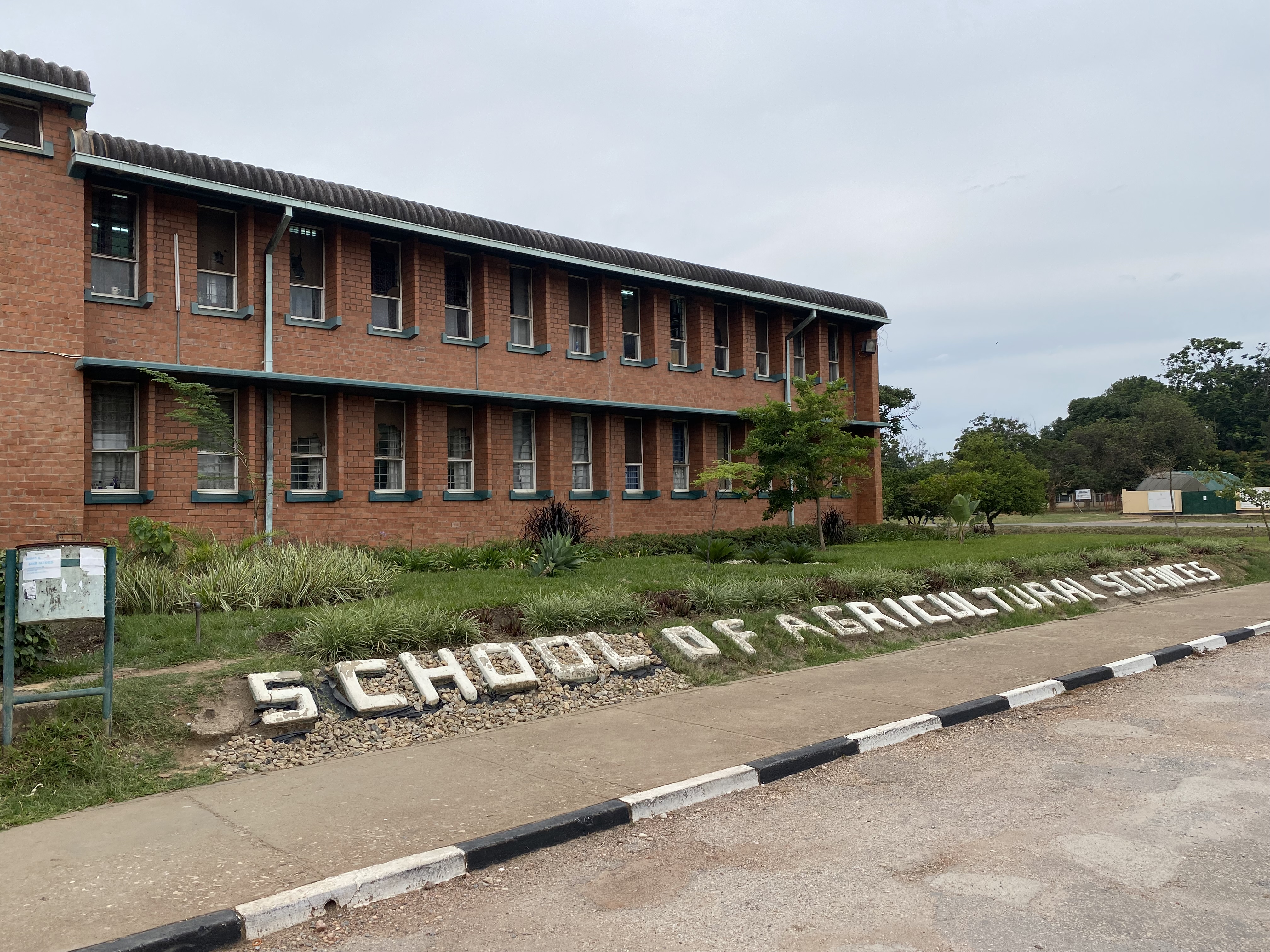
The School of Agricultural Sciences was established in 1971 at the Great East Road Campus of the University of Zambia in Lusaka.
The School offers undergraduate majors of five-year duration leading to the Degree Bachelor of Agricultural Sciences. These include: Agricultural Economics, Agricultural Extension, Animal Science, Plant Science, Land Management, Food Science and Technology, and Human Nutrition.
The School offers four Master of Science programmes of two-year duration in Agronomy (with the option to specialize in either Crop Science or Land Management), Animal Science, Agricultural Economics and Human Nutrition. The Crop Science option has been developed into a SADC Regional MSc. programme training students from the SADC region.
Students following the undergraduate programme do their first year in the School of Natural Sciences where they follow basic courses in biology, chemistry, physics and mathematics. In the second year, they follow introductory courses in agricultural sciences. At the end of the second year they choose to follow any one of the five undergraduate majors being offered. In addition, they do a minimum of 30 weeks of vacation practicals, which include a research project before they graduate. This is intended to enable students gain some practical skills in agricultural value chains and to expose them to the rural community for which they are being trained to serve.
Students following the postgraduate programmes spend their first year taking courses, which they have to pass before proceeding to the second year. The second year is entirely devoted to thesis research and writing.
The academic staff of the School is actively engaged in research projects which are directed at answering some of the problems facing agriculture in Zambia. In addition, the staff performs public services in various areas of national development. These efforts constitute one of the School’s major contributions towards the University’s motto of Service and Excellence.
Historical review
The first students were registered in the School of Agricultural Sciences in 1968, but it was not until 1971 that the School was established as a separate entity at the Great East Road Campus in Lusaka. Even at the time of its establishment, there were plans to develop the School by integrating into the University the Natural Resources Development College and locating there a greatly enlarged School of Agricultural Sciences. Steps were being taken to implement these plans but these were over-taken in 1975 by a decision to re-constitute the University on a federal basis, with constituent institutions in Lusaka, Ndola and at a rural location in Solwezi District. It was decided that in the newly organised University, the School of Agricultural Sciences, together with the Schools of Veterinary Medicine and Forestry, would be located in Solwezi District.
However, due to the deteriorating economic situation it was not possible to proceed at once with developments in Solwezi District. Moreover, an analysis of agricultural and environmental factors at Solwezi District revealed that this would not be a suitable location for regular undergraduate programmes in Veterinary Medicine and Agricultural Sciences. Hence, without prejudice to eventual developments in Solwezi District it was decided in 1980 that these two Schools should be developed in Lusaka as an integral part of the University of Zambia at the Great East Road Campus.
Following this decision, construction of Phase I of the School building started in January, 1984 and was completed in January, 1987. This Phase consists of five teaching laboratories, two lecture theatres, two sets of research laboratories, ancillary rooms and offices for the Departments of Crop Science and Land Management. It also accommodates the School administration offices. Phase II is yet to be developed due to lack of resources at present. Phase II is meant to contain three teaching laboratories, three lecture theatres, an audio visual workroom, one set of research laboratories, specialist rooms and offices for the Departments of Animal Science and Agricultural Economics and Extension Education as well as some centralised facilities.
The University Farm, commonly referred to as Liempe Farm, was officially acquired by the University as a gift from the then Project Division of the Ministry of Rural Development on 1st August 1976. The farm has over the years served as a production, teaching and research facility for the School.

